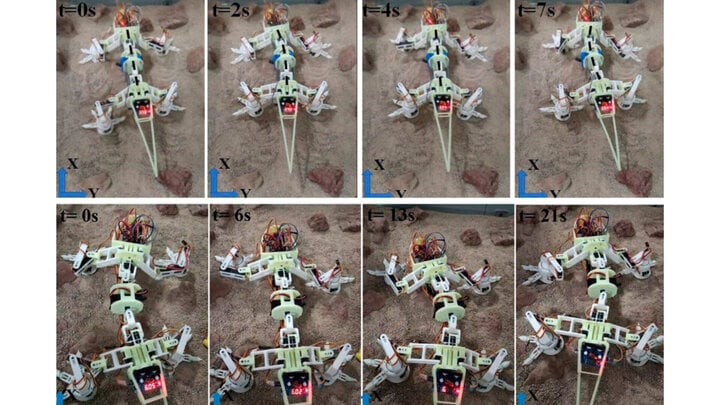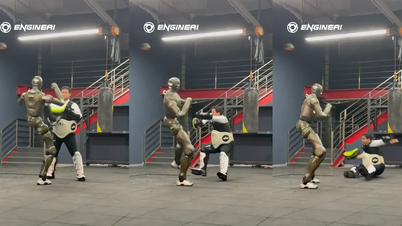Exploring Mars is beneficial for enhancing our knowledge and understanding of the potential for ancient microbial life to exist there, as well as discovering new extraterrestrial resources, in preparation for future human missions to Mars.
To support ambitious unmanned missions to Mars, various types of vehicles, spacecraft, and planetary probes have been developed to perform tasks on the Martian surface. However, because the Martian surface consists of granular soil and rocks of varying sizes, modern vehicles and spacecraft may have difficulty navigating soft ground and climbing over rocky terrain.
To overcome these difficulties, researchers in China have recently developed a four-legged crawling robot inspired by the agile locomotion of desert lizards.

Initial tests have confirmed the lizard-like robot's suitability for simulated Martian terrain, including granular soil and rocky surfaces. (Image: NUAA)
Developed by a team at China's Nanjing University of Aeronautics and Astronautics (NUAA), this innovative four-legged robot is constructed from 3D-printed plastic and operates on a mechanism that mimics the exceptionally agile, crawling movements of desert lizards with superior precision.
Here, researchers have developed a four-legged robot that mimics the biological structure of a desert lizard, including its spine, legs, and feet, with updated joint structures to enhance the robot's stable movement.
In addition to the main motor, the lizard-like robot incorporates four auxiliary motors for flexibility and stability, along with eight springs to enhance load-bearing capacity and reduce vibration. Each leg has two hinges for climbing movements, with an upgraded hip joint ensuring stable lifting. The robot's ankles can rotate actively, and its flexible toes are equipped with claws to enhance grip and adaptability to various terrains.
In addition, kinematic models are also established to coordinate and create a variety of movements for the robot.
Powered by a 12-volt lithium-ion battery, the lizard-like robot is equipped with wiring, a voltage regulator, and a controller to facilitate stable wobbling movements and efficient grasping and gripping of soil and rocks. According to the researchers, achieving this functionality is a challenge, requiring considerable effort, time, and meticulous engineering and technological calculations to bring the robotic lizard project to fruition.
Initial tests have confirmed its suitability and effectiveness for simulated Martian terrain. The team claims that this biomimetic robot has demonstrated promising capabilities in grasping and moving across both granular soil and rocky surfaces, representing advances in robotic exploration technology for extraterrestrial environments.
Source











































































































Comment (0)